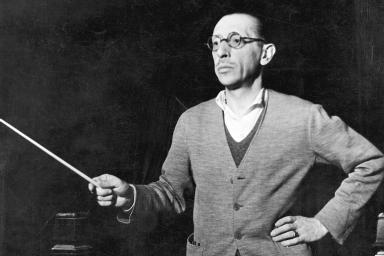Even those of us who only took half a music appreciation course in college know about the impact of Igor Stravinsky’s The Rite of Spring, the orchestral ballet that nearly caused a brawl at its debut. Ah, but how times have changed in the exactly one hundred years since that May evening at the Théâtre des Champs-Élysées. Now no music, no matter how radically it breaks from tradition, causes anything like a riot; at worst, listeners shuffle out early, and that’s making the debatable assumption that such a piece would draw an audience in the first place. Today’s musicophiles like what they like, often to the point of obsession, and simply ignore what they don’t. The past century, of course, has proven Stravinsky’s compositional instincts ahead of their time, now that we all know the name of the The Rite of Spring, and the complex work itself has attracted plenty of obsessive musicophiles of its own.
Some have gone as far as to turn the music into imagery. In 1913, we had no more technologically advanced way to visualize a piece of music than through dance, such as The Rite of Spring‘s ballet. In 2013, the art of computer graphics greatly expands the quest for an ever more perfect way to represent music not just to the ear, but to the eye.

Composer, pianist and software engineer Stephen Malinowski has long led the way with the various iterations of his Music Animation Machine. At the top of the post, you can see a visualization of The Rite of Spring‘s first part, “The Adoration of the Earth.” Just above appears its second part, “The Exalted Sacrifice.” “I was not aware of the kind of harmonic things Stravinsky has going on,” Malinowski told NPR, explaining what he learned about the piece in the process. “It’s incredible — Stravinsky continually torques you, startles you, and frustrates your anticipations.” Imagine how it would have blown those early-twentieth-century Parisian minds to see this at the debut.


You must be logged in to post a comment Login